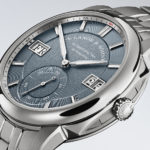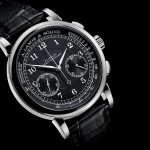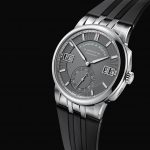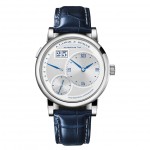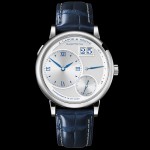A. Lange & Söhne Introduces the Odysseus Chronograph
A chronograph with a twist.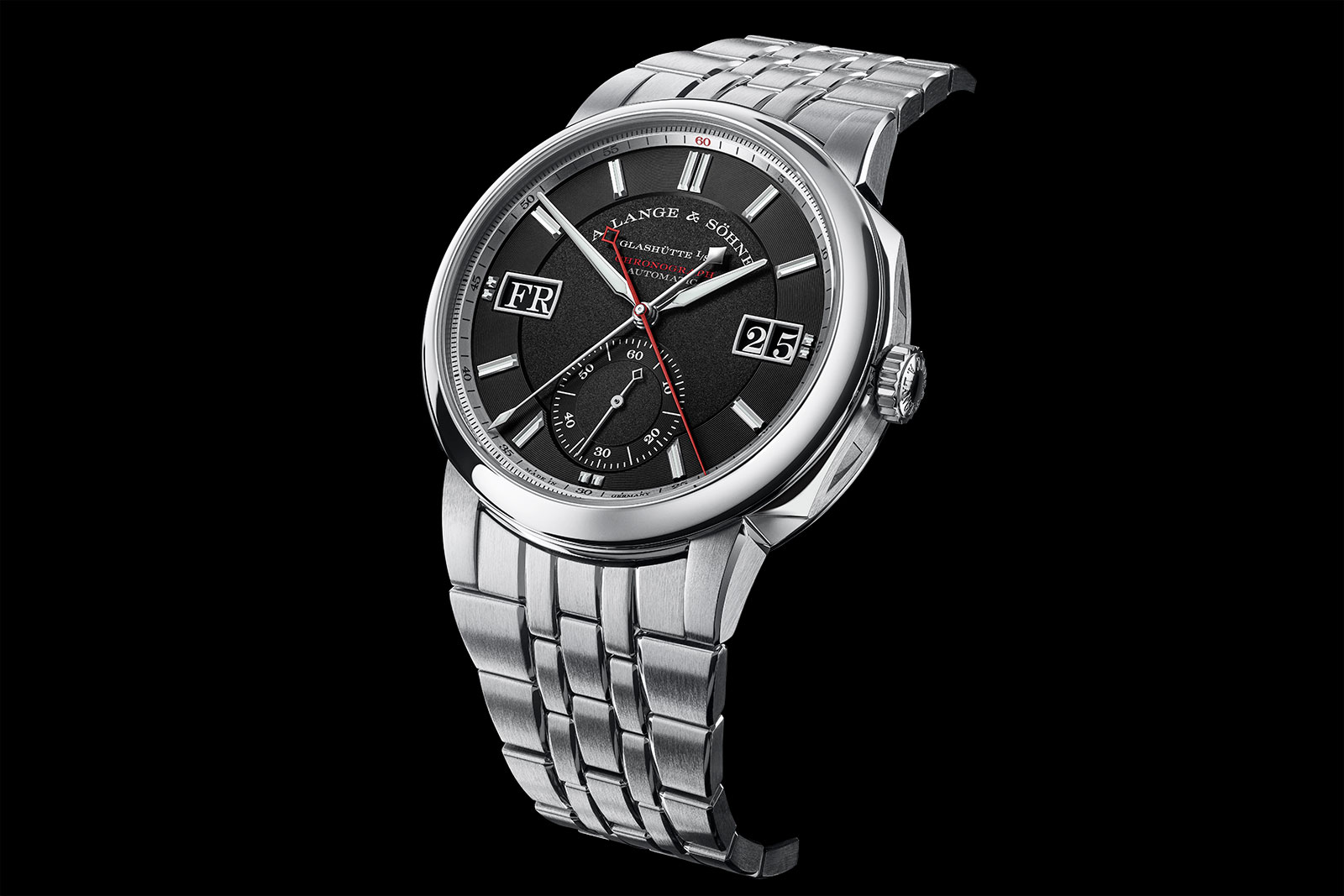
Unveiled in 2019, the Odysseus was A. Lange & Söhne’s first foray into sports watches. A commercial success since launch, the Odysseus has since become one of the brand’s most desirable watches. Though it has been iterated in different metals (including titanium), it has remained the same model, until now.
Long anticipated and alluded to by chief executive Wilhelm Schmid, the Odysseus Chronograph has finally arrived. While powered by a brand-new automatic movement that incorporates a novel and fanciful reset feature, the watch retains the same Odysseus styling.
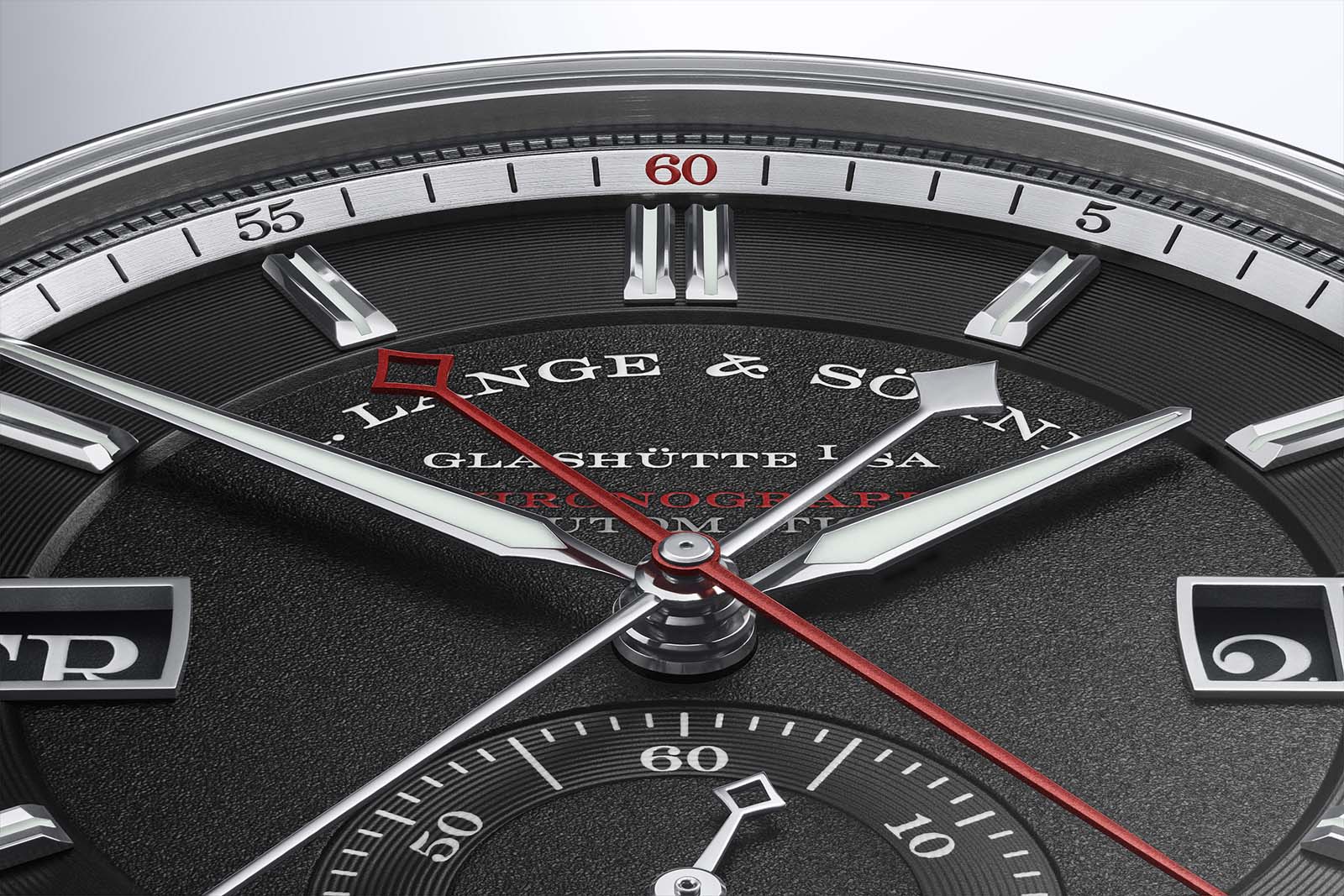
Initial thoughts
The Odysseus Chronograph is not unexpected. From the start the Odysseus case was designed to feature integrated pushers resembling crown guards, making it ideal for a chronograph. And the Odysseus Chronograph looks exactly as expected.
Though the design is not surprising, the Odysseus Chronograph is cleverly designed. It manages to retain the aesthetics of its predecessor despite being substantially more complicated. The key visual difference is the addition of just two central chronograph hands. The consistent design was accomplished by smartly endowing the large integrated pushers with dual functionality of activating the chronograph or calendar adjustment.
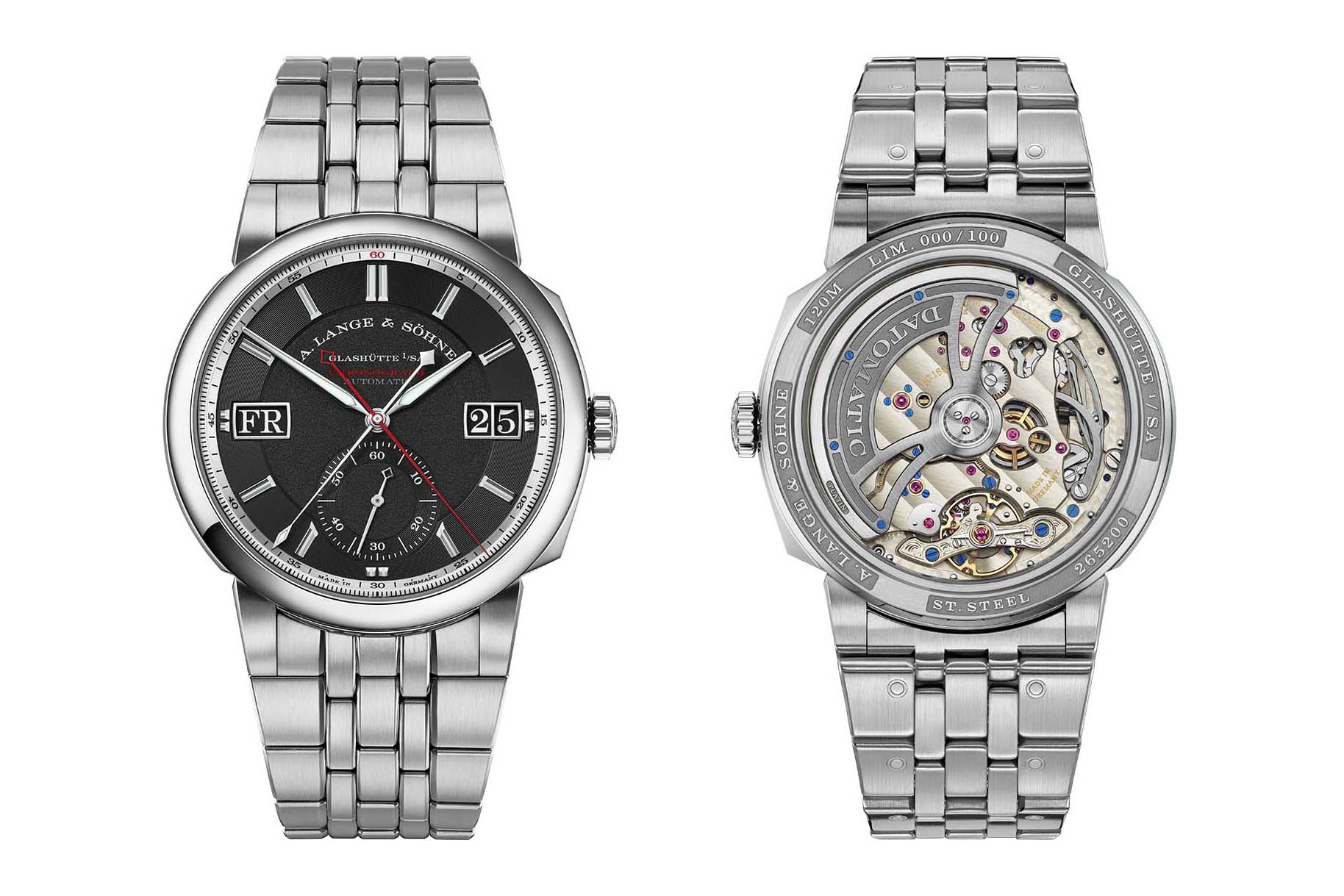
Predictably, the new movement inside is automatic – atypical for Lange but sticking to industry convention for a sports watch.
However, being automatic means that most of the chronograph mechanism is hidden under the bridges and rotor, resulting in an aesthetic that lacks the intricacy of the typical Lange chronograph movement. The density and grace of steel levers visible in Lange’s manual-wind chronographs are missing here.
In fact, it construction of the movement means its appearance is somewhat generic. Although the finishing and decorative elements are clearly Lange, the overall structure of the movement resembles high-end chronograph movements from the likes of Audemars Piguet and Rolex.
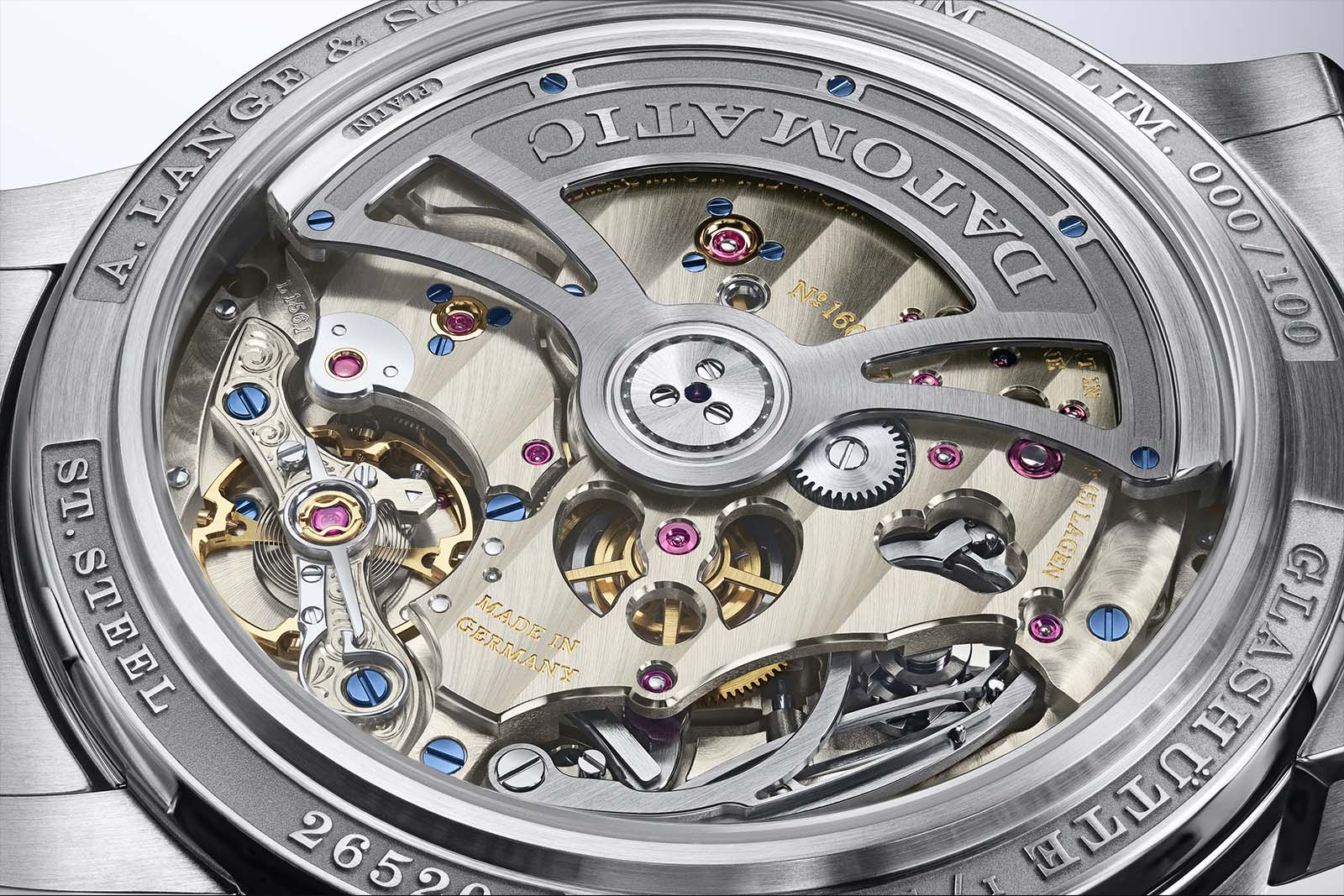
Though the appearance on the back is conventional, the movement incorporates an oddity, a quirky reset feature for the chronograph. While the chronograph minutes reset to zero as usual, the chronograph seconds will rapidly circle around the dial, making a number of revolutions that match the number of elapsed minutes before resetting to 12 o’clock. It is odd to see such a gimmick in a Lange movement, as the brand usually focuses on elaborate engineering and practical utility, which is not the case with this reset function.
The Odysseus Chronograph costs about US$145,000 – a lot despite Lange’s vaunted quality. In any case, it is limited to 100 pieces in steel so availability will be challenging, to put it mildly.
Familiar livery
Like the inaugural model, the Odysseus Chronograph has a hefty steel case, but now enlarged to accommodate the new movement. At 42.5 mm wide and 14.2 mm thick, the Odysseus Chronograph has presence. It is chunky but the dimensions are in keeping with what is expected in a modern sports watch.
Naturally the Odysseus Chronograph is fitted to a steel bracelet like that on the original. It flares outwards at the case to match the taper of the lugs, creating the appearance of an integrated bracelet. And integrated into the clasp is a ratcheting extension system that is released by the round button in the centre of the clasp.
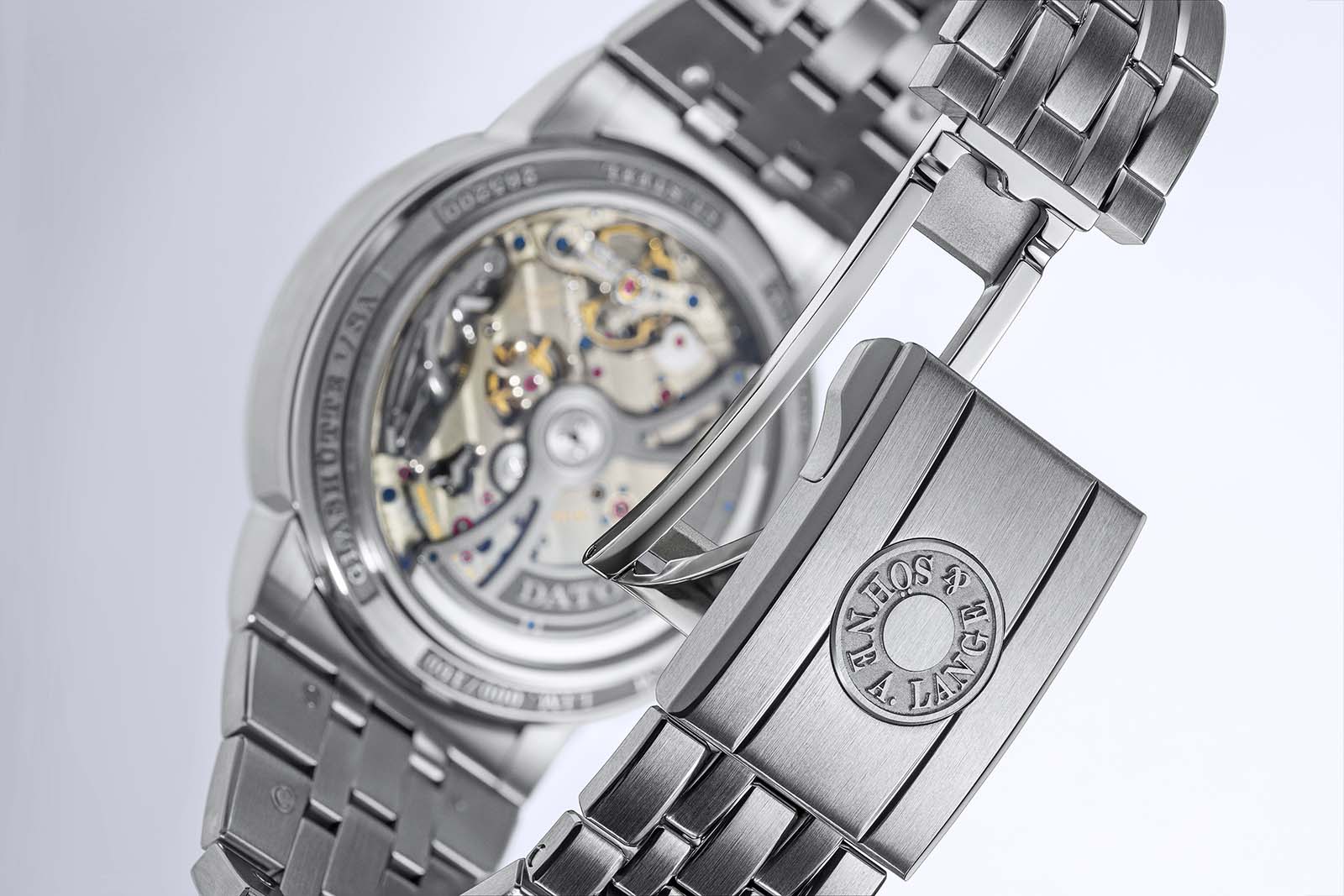
While the case is bigger, the black dial is almost identical to that of the original Odysseus in both size and appearance. The dial fits in the larger case due to a wider flange around the dial, which has the minutes on its inner edge and the addition of an extended lip featuring the hashmarks for the elapsed seconds.
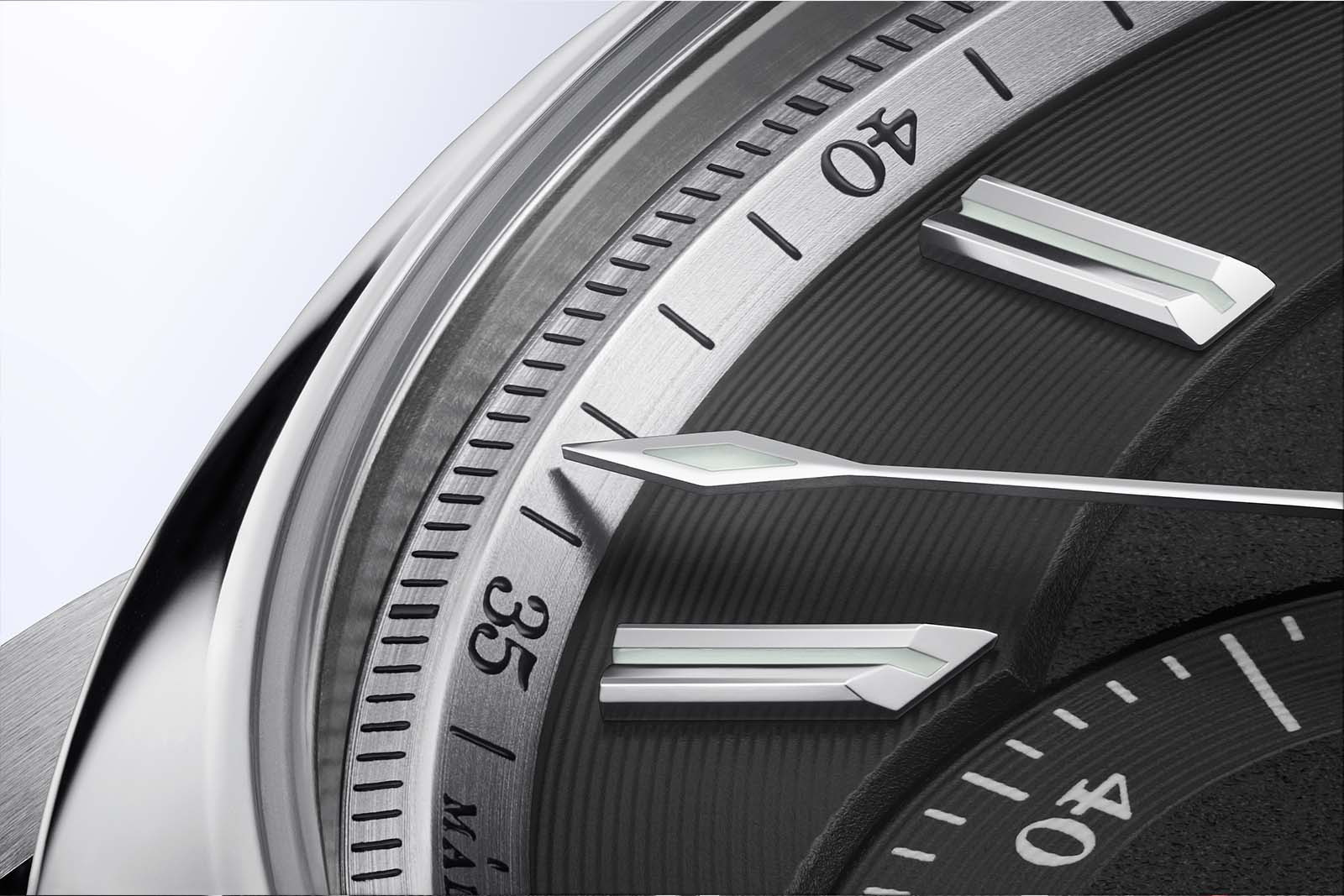
The only other clue that this is a chronograph – besides the label at 12 o’clock – is the pair of central hands. The Odysseus Chronograph has a conventional central chronograph seconds, along with an uncommon central 60-minute chronograph hand, which does away with the need for registers to display elapsed time.
The rest of the dial is familiar and identical to the original Odysseus. The sub-dial at six o’clock displays running seconds, while the oversized date and day displays are at three and nine o’clock respectively.
The raised chapter ring for the hours features concentric patterning and adds depth to an otherwise expansive dial. The large and legible hour markers have luminous fill, as do the hands, including the tip of the chronograph seconds.
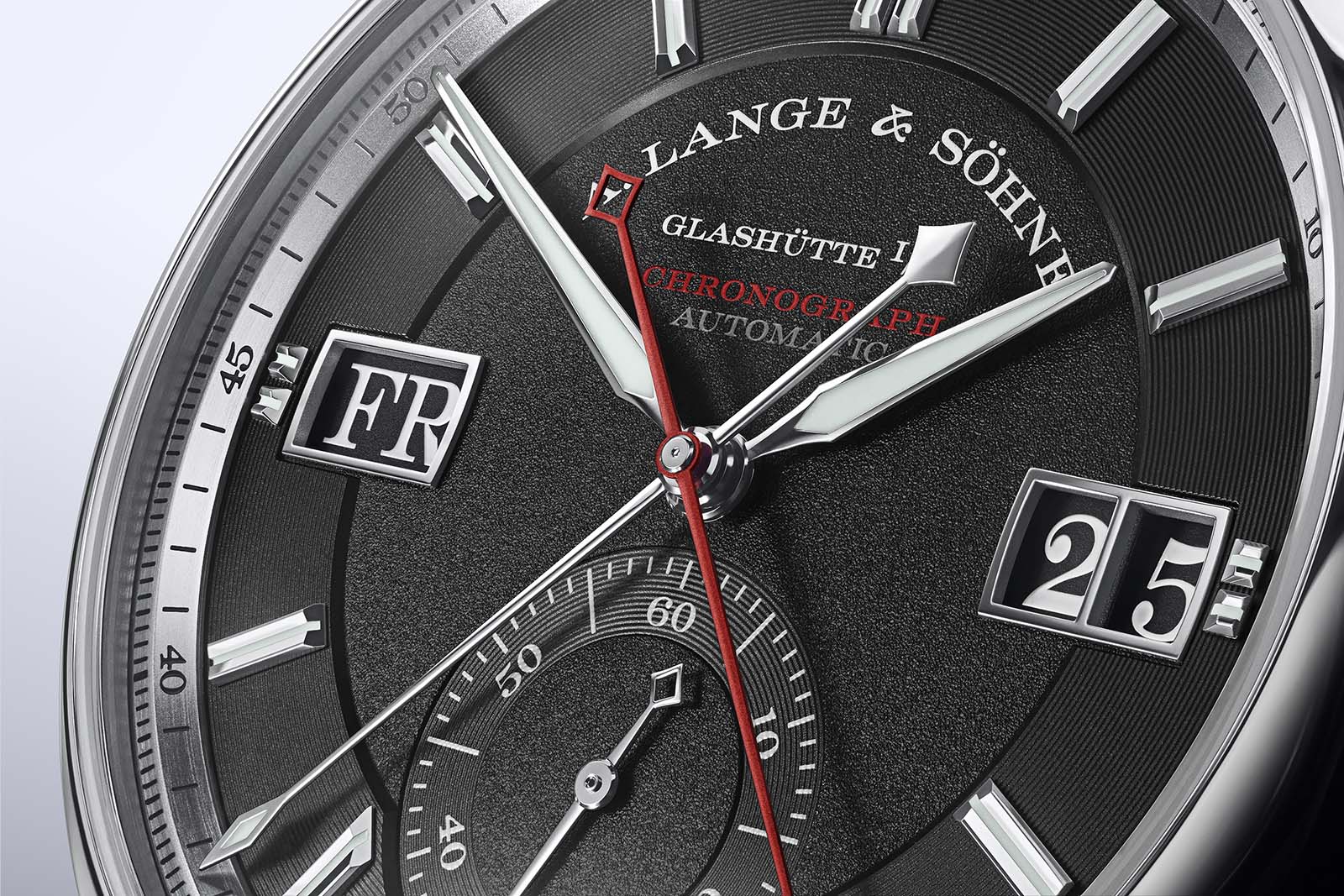
A repurposed feature of the original Odysseus are the two large buttons on each side of the crown. Resembling crown guards, they were date correctors on the first Odysseus and now act as pushers for the chronograph.
But there’s a twist as the pushers have dual functionality – pulling the crown out to its first stop transforms the pushers into correctors for the date and day displays, as they are on the original Odysseus. Returning the crown to its winding position reverts the pushers to chronograph activation.
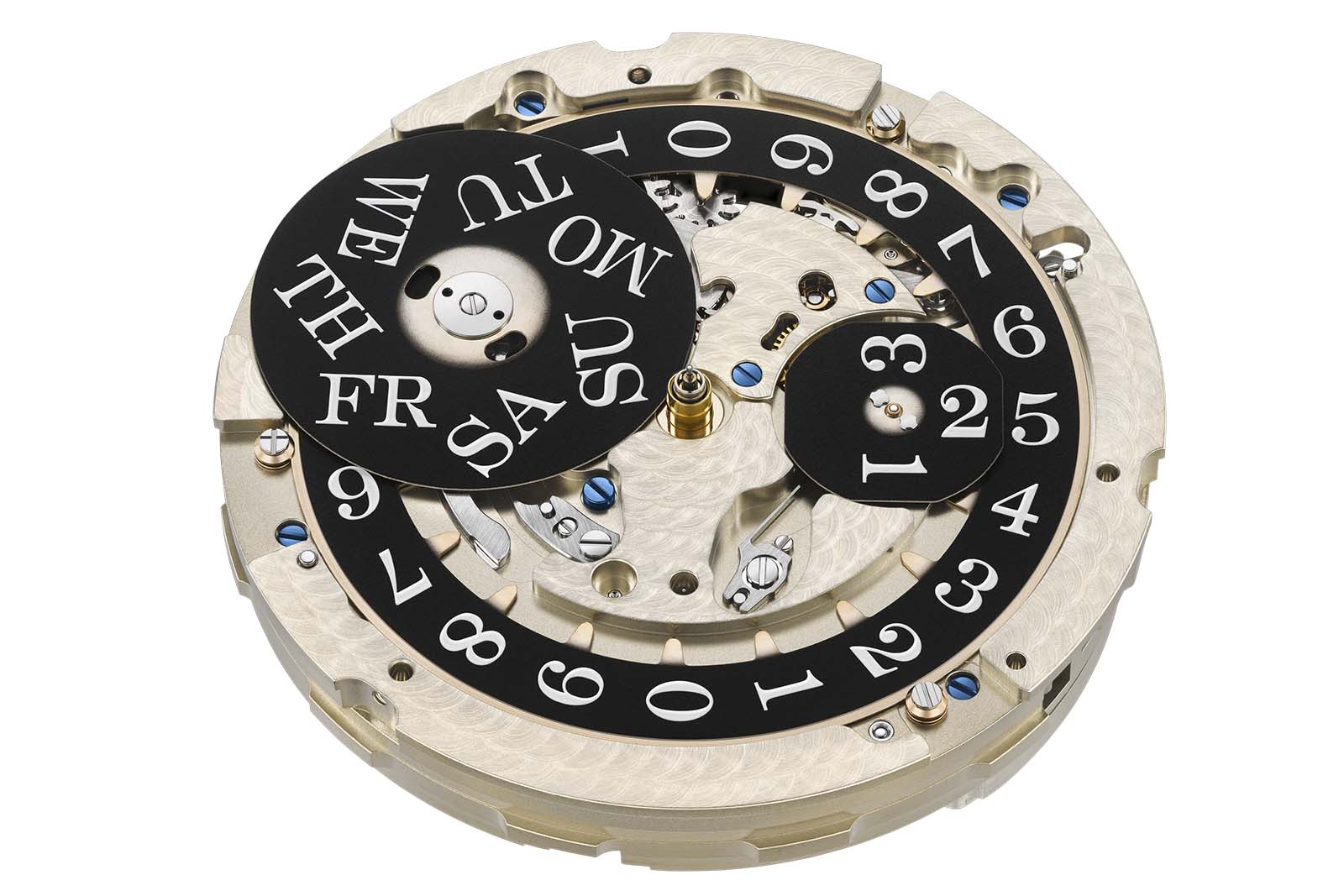
The calendar functions of the Odysseus Chronograph are identical to the preceding model
Automatic chronograph
Powering the Odysseus Chronograph is the L156.1 Datomatic – the first automatic chronograph movement developed by Lange.
It is also the first Lange chronograph movement sporting a vertical clutch, which is prominently visible next to the central rotor and balance wheel. While a portion of the chronograph levers are visible thanks to cut-outs on the bridge, most of the mechanism is covered by the bridge and rotor.
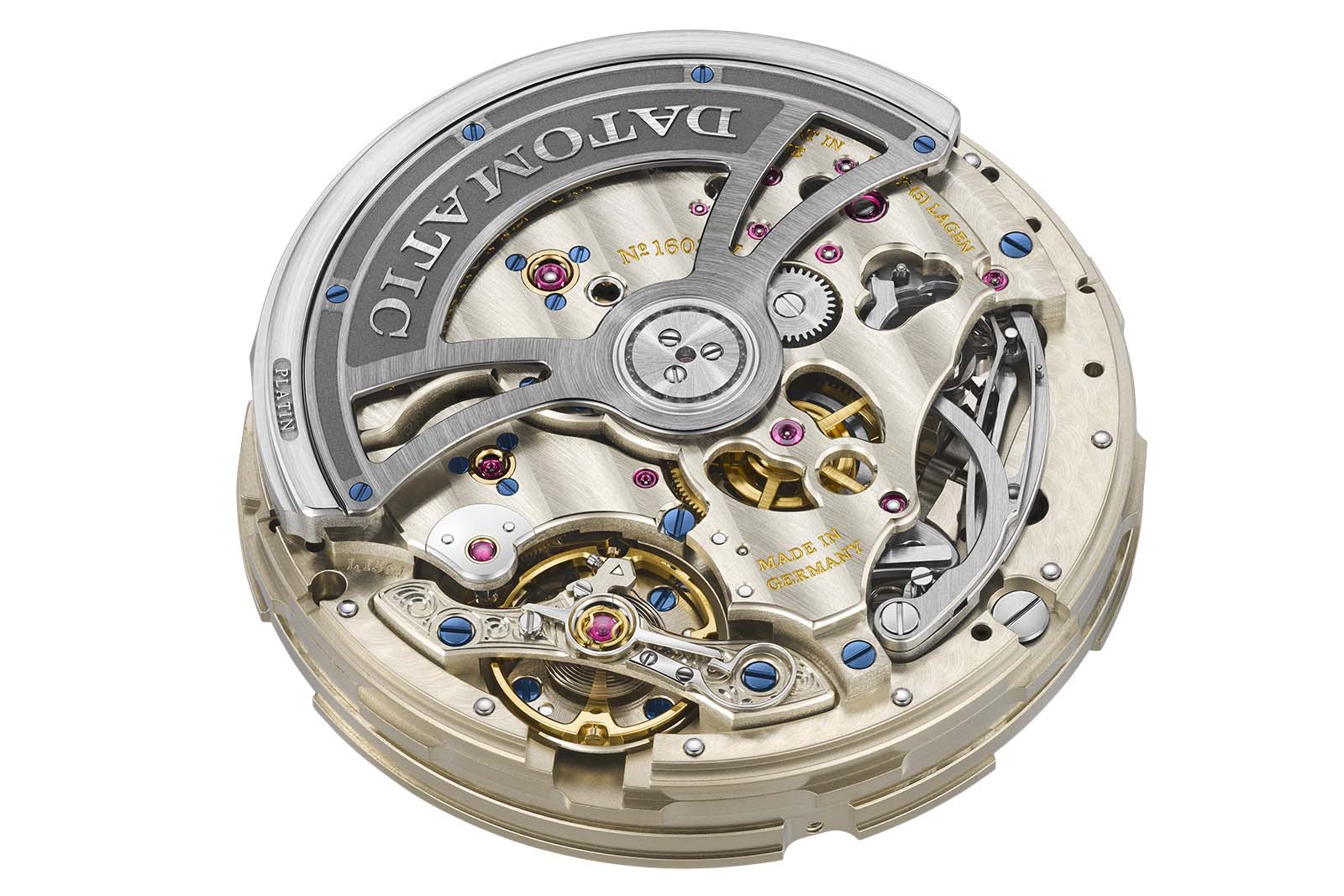
A notable quirk of the movement is the “dynamic reset-to-zero function”. When the chronograph is reset, the chronograph seconds will rapidly complete a number of revolutions matching the elapsed minutes before stopping at 12 o’clock. So if the elapsed minutes was at “15”, the seconds hand will make 15 rapid revolutions around the dial as the minute hand is returning to 12 o’clock.
While novel and not found in another watch, this feature appears to be relatively straightforward. The chronograph seconds hand is most likely directly geared to the chronograph minutes wheel, on which the heart cam for the reset feature is mounted. This allows the chronograph seconds hand to “count” the elapsed minutes and rotate as the minutes are being reset.
Like the L155.1 in the base-model Odysseus, the new L156.1 is equipped with full balance bridge and a 4 Hz balance wheel. This relatively higher frequency ensures stable timekeeping even with active daily use and also allows the chronograph to measure elapsed times with a resolution of up to an eighth of a second.
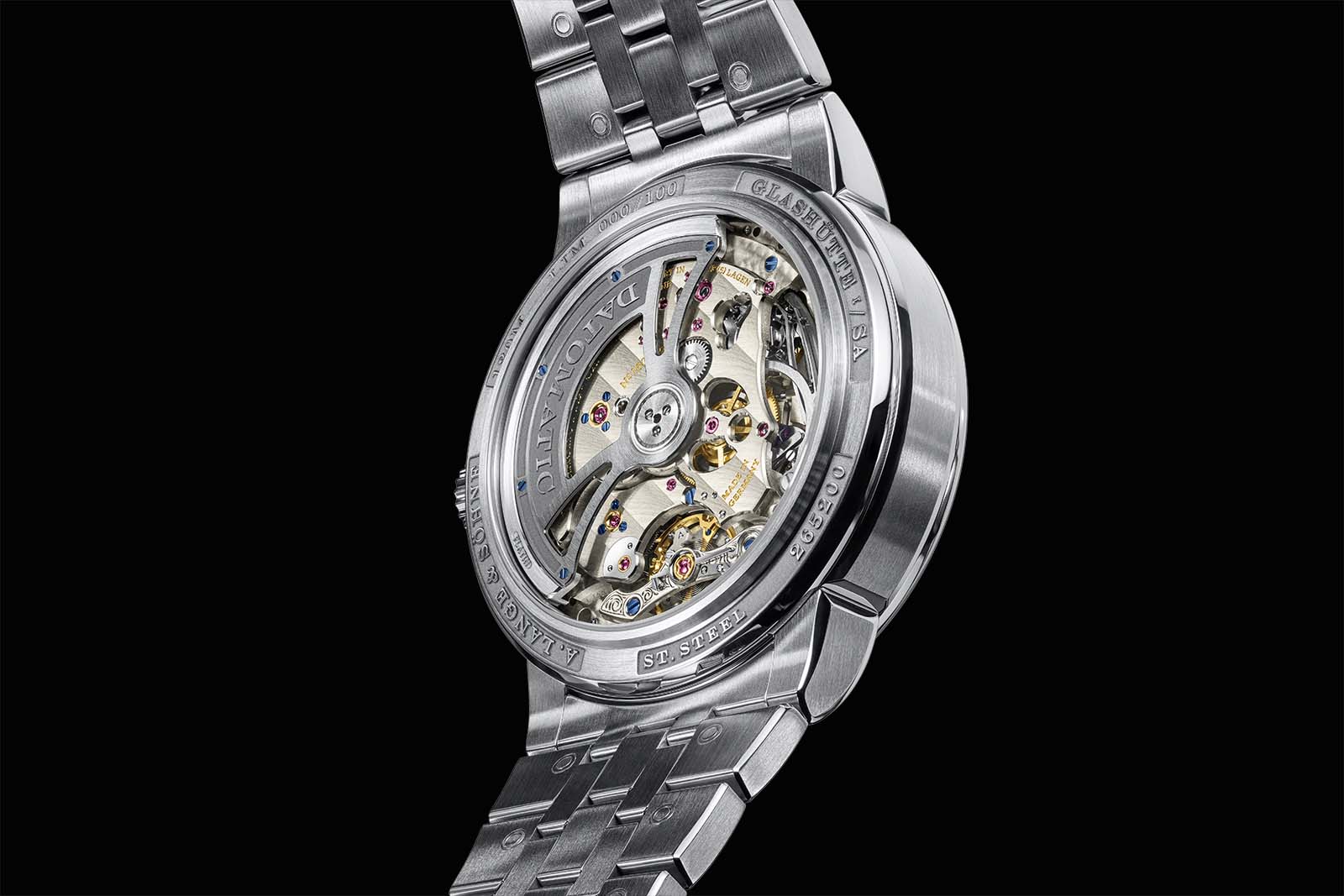
The new movement has the same oscillating weight found in the original Odysseus, an open-worked rotor made of Arcap with a platinum mass along its rim
Key facts and price
A. Lange & Söhne Odysseus Chronograph
Ref. 463.178
Diameter: 42.5 mm
Height: 14.2 mm
Material: Stainless Steel
Crystal: Sapphire
Water resistance: 120 m
Movement: L156.1 Datomatic
Functions: Hours, minutes, seconds, and chronograph
Frequency: 28,800 beats per hour (4 Hz)
Winding: Automatic
Power reserve: 50 hours
Strap: Steel bracelet
Limited edition: 100 pieces
Availability: At A. Lange & Söhne boutiques only
Price: Approximately US$145,000
For more, visit alange-soehne.com.
Back to top.
